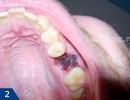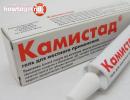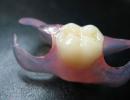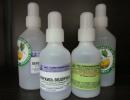Temperature in infants during teething
The topic of teething in children under one year old is often associated with an increase in body temperature. For many parents, a high temperature in a child during teething is an expected phenomenon, and is often mistakenly taken as normal. However, often against the background of acute respiratory viral infections or acute respiratory infections, the baby’s teeth begin to grow. How to distinguish between a normal increase in temperature and the onset of inflammatory processes in a child’s body? How to properly reduce a high temperature? When do you still need a doctor?
As a rule, in infants up to one year old, body temperature is considered normal in the range from 36 to 37 degrees, provided that it is measured in the armpit. The thing is that, due to age characteristics, children are very sensitive to changes in ambient temperature and react to overheating or hypothermia by increasing or decreasing body temperature, respectively.
The ability of the body in children under one year of age to produce heat is very high, while some difficulties arise with heat transfer.
The body temperature of small children can jump due to excessive physical activity: the baby cries for a long time, runs actively, suckles, etc.
But the baby’s body does not give off heat so easily and in only two ways: with the help of sweat and the temperature difference between inhaled and exhaled air. That is, inhaling cool air, below body temperature, the baby exhales air, the temperature of which is equal to the temperature of his body, warming him up, that is, reducing body temperature.
38-40 when teething
All children are different. One child does not have any problems when teething, while the other has a “full bouquet”: temperature 40, snot, diarrhea, etc. Very often, parents attribute many ailments to “teeth.” But in reality, you cannot do without the help of a doctor. After all, only after examination by a specialist can we say that the baby did not catch ARVI at the previous appointment at the clinic and that this is not an intestinal infection.
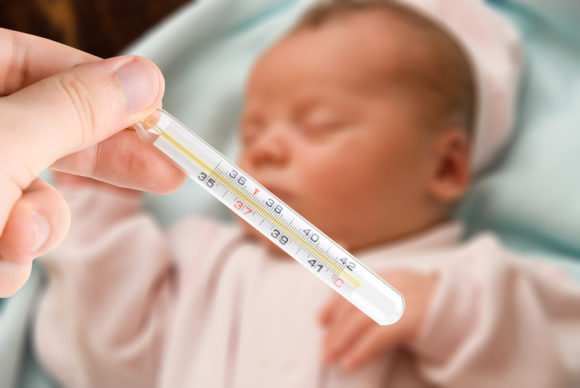
Parents of children under one year old should understand that a common cause of high fever during teething is an acute inflammatory process in the baby’s body, which occurs in parallel. Children can easily catch a viral or intestinal infection only because they constantly put dirty hands and everything that comes to hand into their mouths in order to at least slightly soothe the itching of their gums.
You should not take an elevated temperature during teething lightly; it will never be superfluous to consult a specialist who can, after studying all the symptoms, make the correct diagnosis.
Or maybe it’s still teething
Of course, there are cases when fever in children during teething is not accompanied by other symptoms. In this case, the doctor is inclined to assume (precisely assume, not assert) that the cause of the fever is precisely the eruption of the tooth. In this case, the doctor may suggest waiting a day or two and observing the child. As a rule, there is nothing wrong with this, provided that the situation is controlled by an experienced doctor.
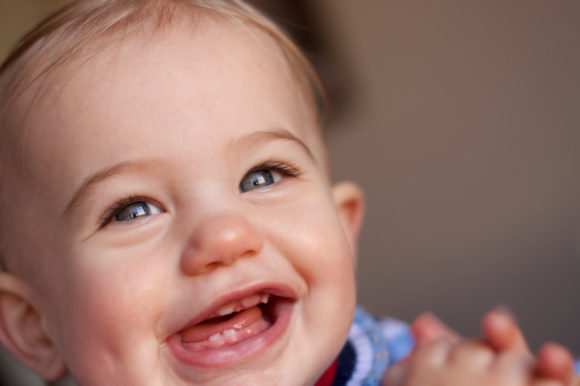
When to sound the alarm
- A prolonged increase in body temperature during teething at 39 degrees (when measured with a mercury thermometer in the armpit) is really dangerous for children under one year old. This temperature needs to be brought down. But you shouldn’t do this in every possible way so as not to harm the child’s body.
- A bad symptom is a sharp increase in body temperature to high levels against the background of the onset of diarrhea, rash, and cough. In such situations, you should seek emergency medical attention.
- It is a warning sign if the fever does not subside when using paracetamol for children, provided that the correct dosage of the drug is followed. It is worth seeking emergency medical help.
- Urgent measures should be taken if the child has diseases of the nervous system.
In any situation when it comes to an increase in body temperature in babies of the first year of life, you should contact your local doctor or pediatrician. Self-medication in children can lead to very bad consequences.
How to help your baby
Children tolerate high fever differently. Some people feel very bad at 37.5, and some kids are cheerful at 38.5. But be that as it may, fever in children during teething does not have an important protective function for the body, so it can be brought down as soon as the mercury on the thermometer reaches 38.
If a child does not tolerate an increase in temperature very well, do not hesitate; you can regulate a slight increase in temperature.
Medicines for high fever
For children under one year old, it is permissible to independently use only two medications to lower body temperature, including during teething: paracetamol and ibuprofen. Modern pharmacological companies produce these drugs under different commercial names and in different forms. Syrups and suppositories are usually used for children under one year of age. It is highly advisable to always have two different products in different forms in the refrigerator. For example, ibuprofen syrup (under any name) and paracetamol suppositories (Panadol, etc.).
It often happens that it is not possible to bring down the fever with the help of one drug, then another is used. Often children tend to vomit syrup at high temperatures, then it is worth using the drug in suppositories.
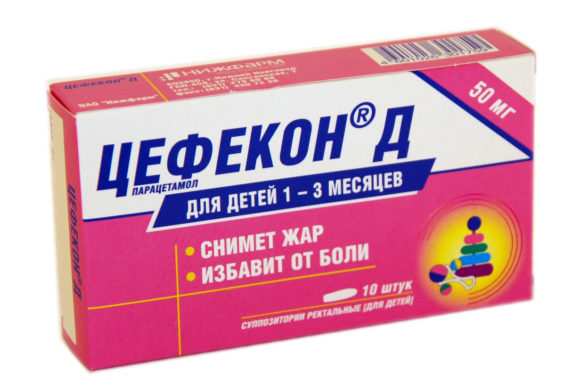
You should not exceed the dosage of the drug indicated in the instructions on your own; this can be dangerous for the child’s health.
Always carefully read the instructions for use of any antipyretic drug before giving it to your baby.
How to properly reduce fever in children
A child under one year old should have a fever by following certain safety rules.
- You shouldn’t try to suddenly reduce your baby’s fever by a few degrees.
- It is unacceptable to exceed the dose of the drug indicated on the packaging.
- The effectiveness of the drugs will be reduced to zero if the child is in a hot, stuffy, unventilated room, he has nothing to sweat with and, accordingly, to give off heat.
- Do not rub a feverish child with vinegar, vodka, or alcohol. This is very dangerous and threatens to poison the child’s body with acid or alcohol, respectively!
- You should not put your child in cold water, undress him in a cold room, or place a cold cloth on his forehead. Such actions by adults will lead to vasospasm, which is very dangerous for the baby’s health!
- You can’t “stuff” the baby with all kinds of antipyretics!
What to do if your baby has a high temperature
First of all, parents should calm down and assess the baby’s condition. If it is possible to wait for a doctor at home, we wait for him, while helping the child:
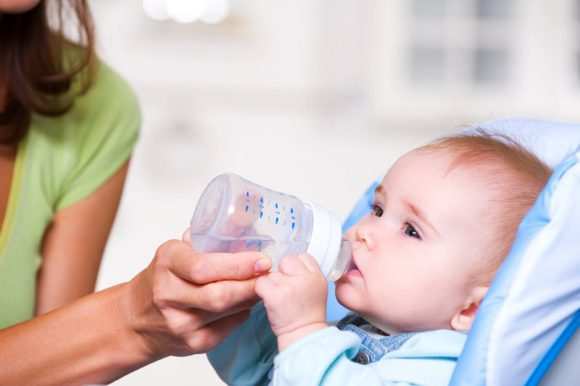
In any case, it is worth contacting the doctor who is observing the baby. If you cannot eliminate your child’s fever on your own within 2-3 hours, you should seek emergency medical help.
A huge number of different thermometers does not guarantee their quality. The experience of many parents and pediatricians proves the advantage of a proven mercury thermometer
Parents should be aware that the body temperature of different organs and parts of the body differs significantly.
When measuring the body temperature of children in the armpit with a mercury thermometer, you are unlikely to get confused, because most sources indicate standards for measuring temperature in the armpit. Perhaps the only significant drawback of mercury thermometers is that you need to hold it for at least 5 minutes, which is often difficult to do with restless children.
It is also worth considering that the reading on the thermometer will be much higher than the real picture at a time when the child is actively running, crying for a long time, and suckling.
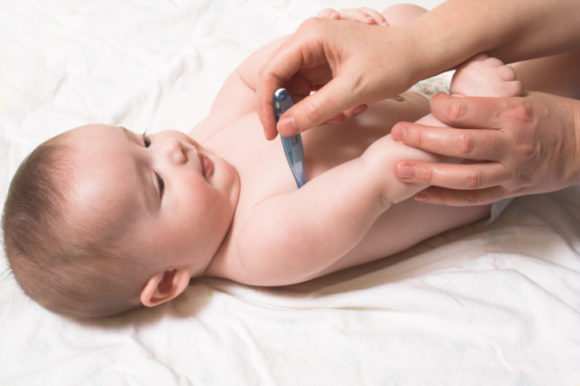
What parents need to know
- Body temperature in the fold of skin on the neck is slightly lower than in the armpit.
- The values will be higher when measuring t̊ in the rectum and mouth than in the armpit.
- You should not trust your feelings and try to determine whether a child has a fever by touching his legs, arms, or forehead. The temperature of the feet and hands is much lower than the body temperature of the armpit.
- A common occurrence in children under one year of age is pathological hypothermia. In this condition, the forehead and limbs are cold, and the t̊̊ can be about 40 degrees.
If we talk about fever in children under one year old, even if we are talking about teething, the child must be shown to a doctor who can adequately determine the causes of this condition. You should not self-medicate infants. If your baby’s condition worsens, you should seek emergency medical help.

